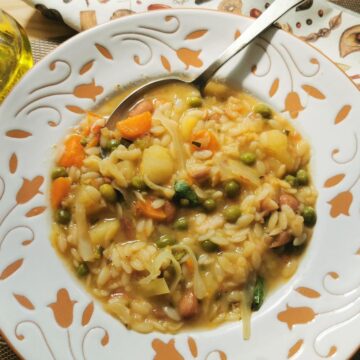This hearty minestrone Milanese is an excellent nutritious Italian vegetable soup from Lombardy. It is thicker than most minestrone soups and filled with wholesome seasonal greens, protein-rich beans, and fragrant herbs. Add rice or pasta, and serve it the Italian method with grated Parmigiano and a splash of additional virgin olive oil.

What’s minestrone?
Minestrone is mainly a hearty thick vegetable soup made with seasonal greens, plus, some sort of pork (pancetta, guanciale, speck, sausage), and bread, rice or pasta. Variations of minestrone could be discovered all through Italy.
The historical past and origins of minestrone.
Minestrone has very historical origins. Apparently, the Historic Romans made a rudimentary model with onions, garlic, carrots, asparagus, lentils, mushrooms and what they may discover on the time, boiling all of the components in water.
Some components have been added over the centuries because of the conquests and discoveries made by the Romans and Europeans, akin to potatoes and tomatoes which arrived in Italy solely after the invention of the Americas within the sixteenth century.
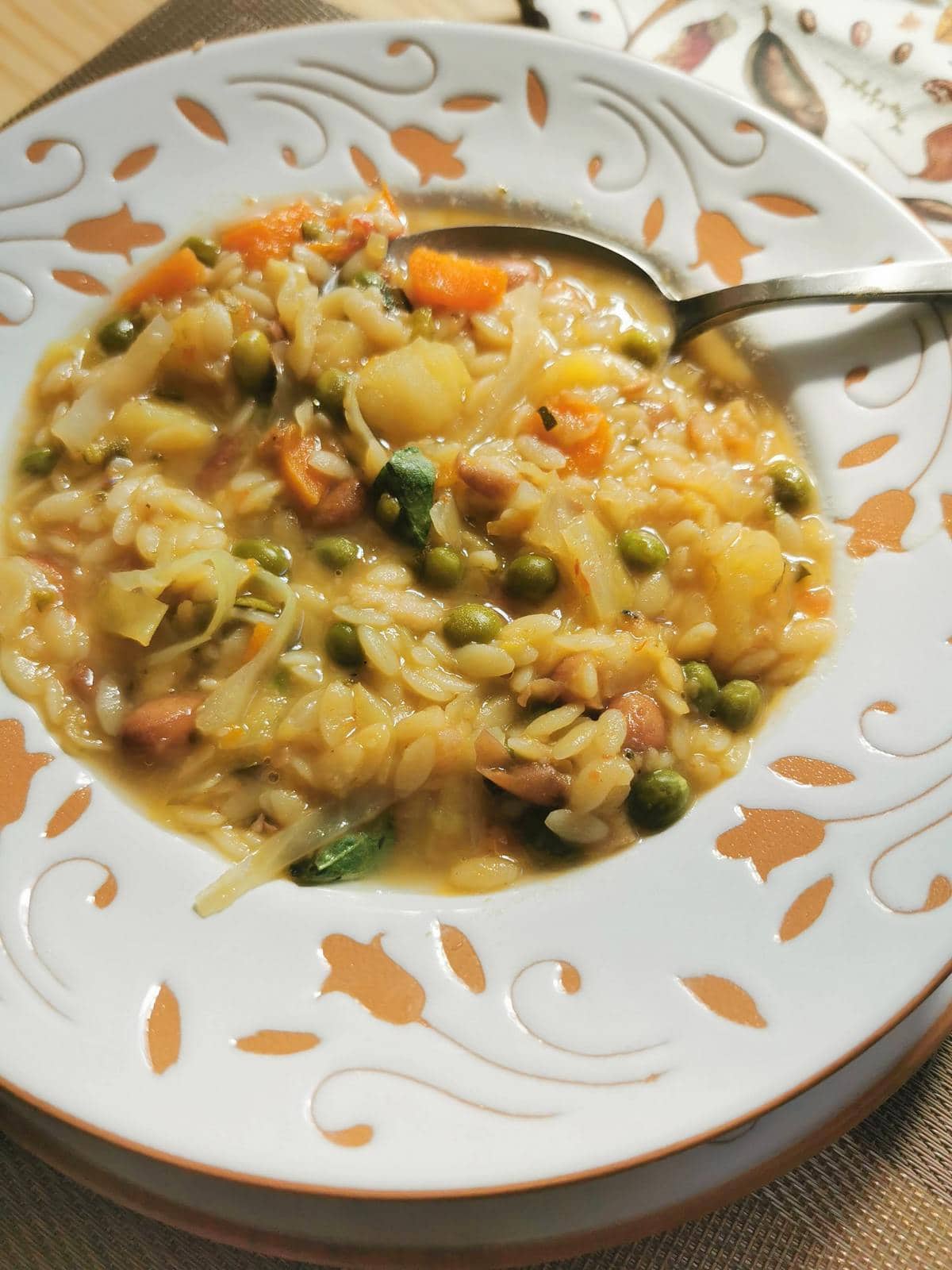

Minestrone was as soon as a staple one plate meal for the agricultural Italian inhabitants, who usually made it with seasonal greens that had been not actually recent. Additionally they added components like legumes which required lengthy cooking and bulked it out with rice, pasta or bread to make it extra filling.
Right now, minestrone stays a staple meal for Italian households. Nonetheless, it’s not a dish for the poor however one that’s loved all through the nation due to its dietary worth as a lot as how scrumptious it’s.


What’s minestrone Milanese?
Minestrone Milanese is the model of minestrone that comes from Milan and Lombardy. There, it’s eaten each scorching in winter and room temperature in summer season. It consists of fairly a protracted listing of components that are added to the pot in numerous phases.
So, it’s not tough to make however does take some time to arrange and cook dinner. Nonetheless, it’s completely definitely worth the time. Your loved ones will adore it!


Substances, substitutions and suggestions for Milanese minestrone.
Greens and herbs.
Carrots: I used 3 medium sized natural carrots and minimize them into small cubes.
Zucchini: Zucchini is often added to minestrone Milanese in summer season, when they’re in season. Though these days, we will discover them nearly all yr spherical. I used 2 natural zucchini and minimize them into small cubes.
Inexperienced celery with among the leaves: Inexperienced celery is often thinner than white celery and, in Italy, it comes with leaves. In case you can’t discover it, use white celery. You have to minimize the celery into small items too.
Contemporary sage: Sage provides a beautiful barely bitter natural taste to dishes. As a substitute of sage, you can too use marjoram. Contemporary herbs are higher than dried. In case you solely have dried, use simply half a teaspoon.
Onion: I used a standard yellow onion, however a candy purple onion works effectively too.
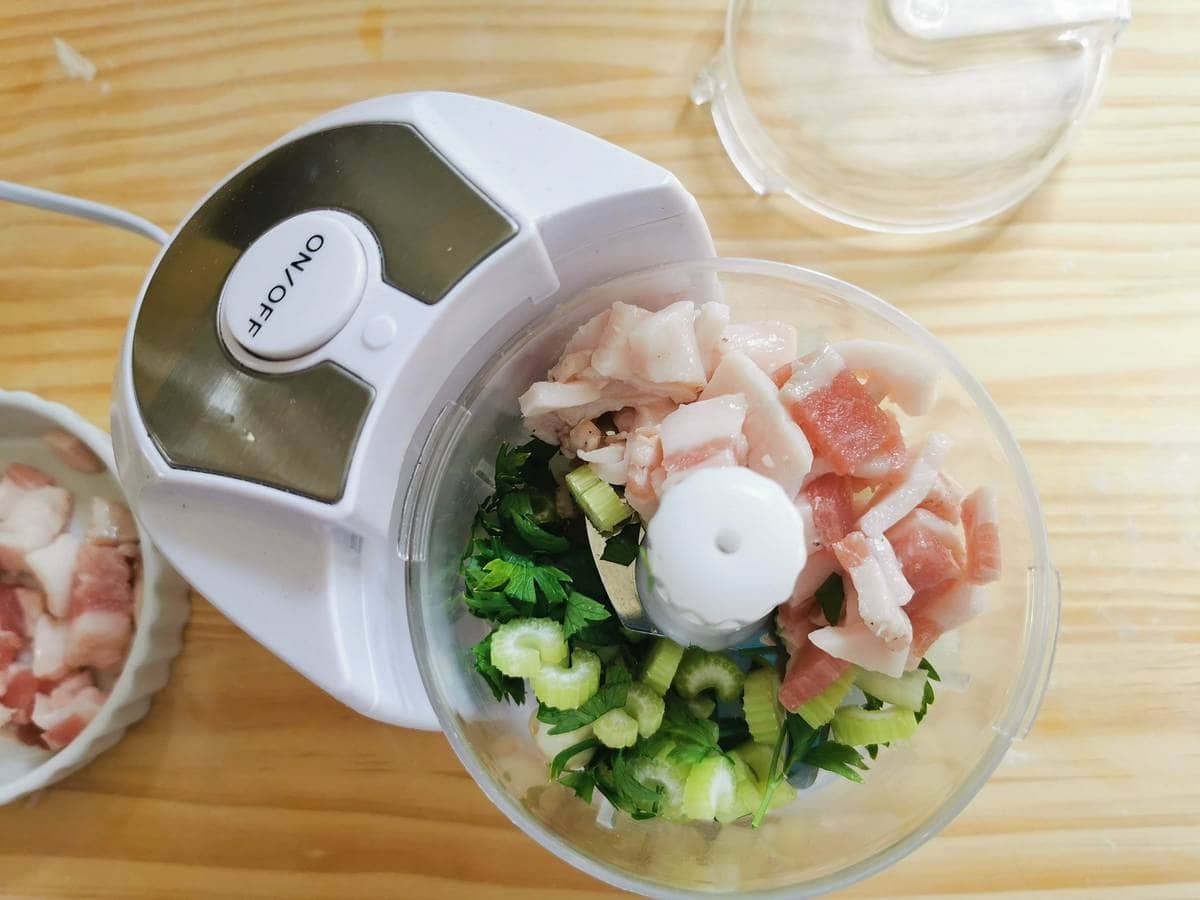

Potatoes: My potatoes truly got here from my backyard! Waxy potatoes (purple potatoes) or boiling potatoes (white potatoes) are one of the best to make use of in soup. These potatoes will maintain their form and never disintegrate.
Peas (recent or frozen): As soon as once more, I used my very own backyard produce, homegrown frozen peas. You should use recent or frozen. Contemporary peas require longer cooking and it is advisable add them to the soup earlier.
Garlic: The garlic is finely minced as a part of the ‘battuto’. That is the Italian model of the French mirepoix. Nonetheless, on this Milanese minestrone, the battuto incorporates guanciale, garlic, celery and parsley.
Contemporary parsley: Parsley is used within the battuto talked about above and added to the minestrone earlier than serving. Contemporary parsley is best than dried.
Tomato: In summer season, a ripe tomato, peeled, minimize into cubes and with seeds eliminated. I used a handful of small datterini tomatoes from my backyard, which I didn’t peel. You may as well use 2 tablespoons of passata or chopped tomatoes for those who don’t have recent tomatoes.
Contemporary basil: Contemporary basil provides a beautiful recent natural taste to this minestrone. It’s often included in summer season variations, when in season. Dried basil doesn’t have the identical taste.
Cabbage or savoy cabbage: Some individuals additionally use Swiss chard as a substitute.


Beans.
Contemporary or frozen borlotti beans: (or dried beans, left to soak for at the least 12 hours). Also called cranberry beans, Italian borlotti beans are the legume of selection for minestrone Milanese. You may as well use cannellini beans if borlotti aren’t obtainable.
Meat.
Lardo (Italian pig again fats): You should use guanciale or pancetta as a substitute. Many minestrone recipes name for a fatty minimize of cured pork. The recipe I adopted included guanciale (pork cheek). Each lardo and guanciale could be tough to seek out. So, pancetta is an effective different.
Salt: If you’re utilizing guanciale or pancetta, style earlier than including salt as each these pork cuts could be salty.
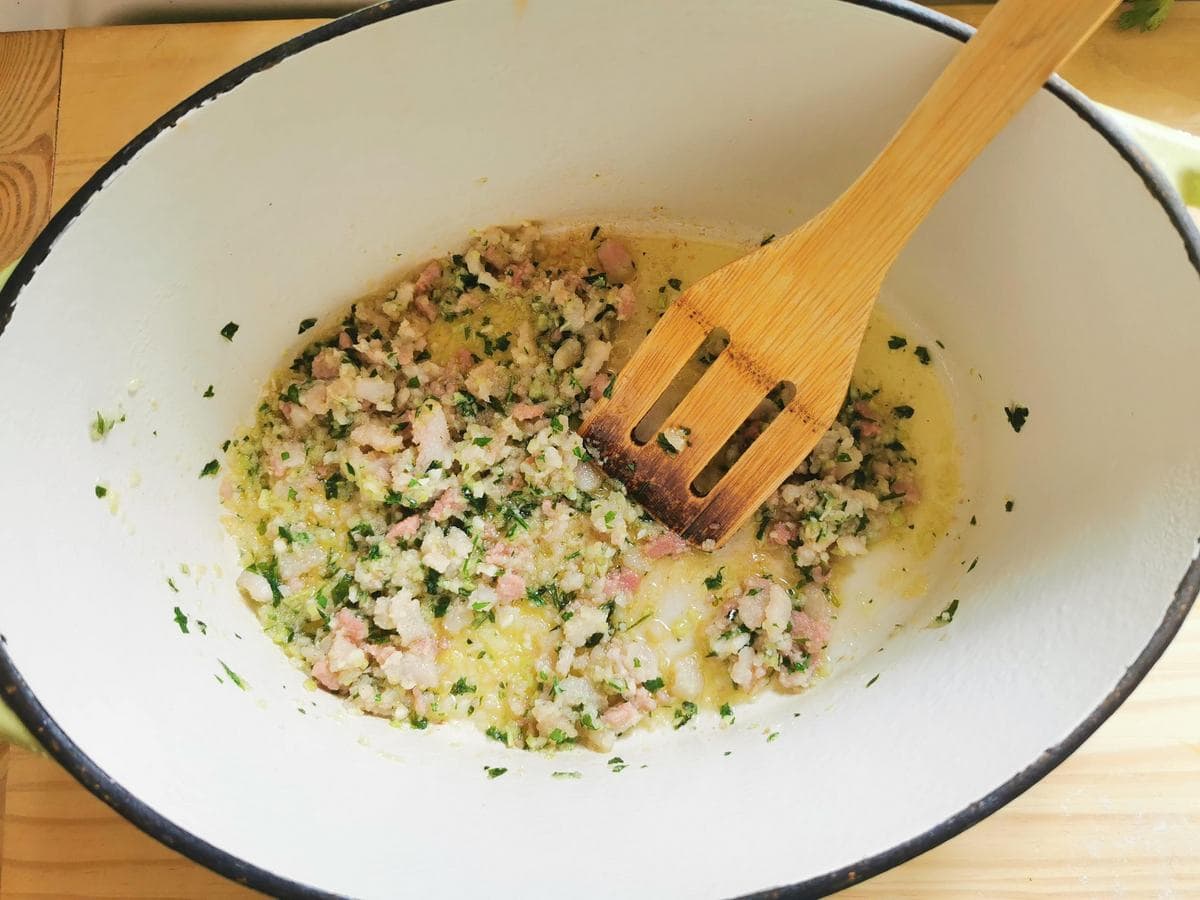

Rice or pasta.
Risotto rice or soup pasta: Minestrone Milanese historically consists of Italian risotto rice akin to Carnaroli, Maratelli, Vialone Nano or Aborio. Nonetheless, some individuals use a small soup pasta. I went for orzo (risoni), which seems to be like rice. I discover it lighter and fewer starchy. After all, to make this recipe gluten free, you will have to make use of rice not pasta.
Substances for serving.
Parmigiano Reggiano: Italians serve minestrone with a sprinkling of freshly grated Parmigiano. Many additionally add a Parmigiano rind to the soup throughout cooking. This provides an exquisite taste. Nonetheless, Italian Parmigiano isn’t vegetarian. So, to make this soup vegetarian, use a vegetarian parmesan.
Olive oil: It’s quite common in Italy so as to add a splash of additional virgin olive oil to minestrone simply earlier than serving. Clearly, the olive oil must be additional virgin and prime quality to get one of the best aroma and style. Slightly olive oil can also be used to sauté the ‘battuto’.
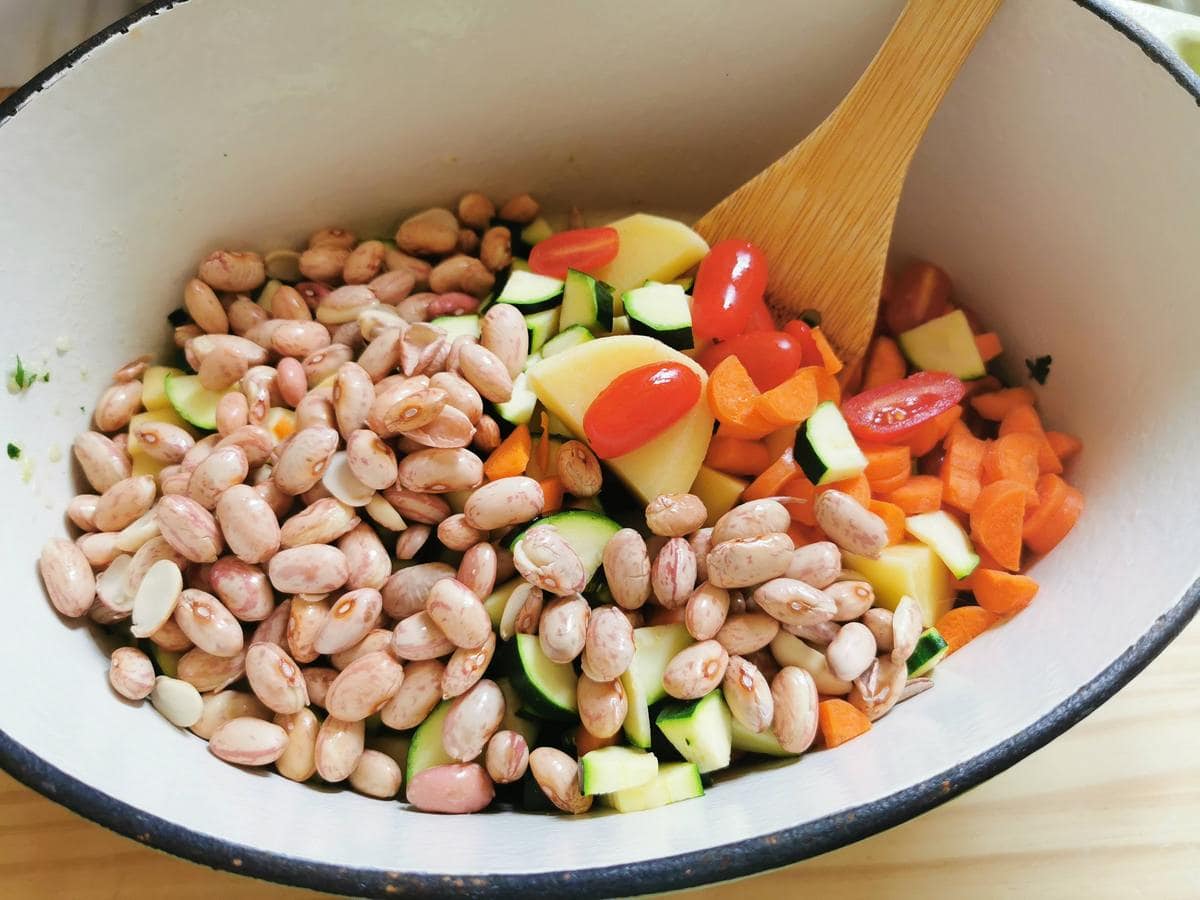

Step-by-step directions.
Put together the components.
First, if utilizing a big recent tomato, peel it after immersing it in boiling water, take away the seeds and minimize into items. Wash the zucchini and carrots and minimize them into small items or cubes. Peel the potatoes and minimize them into cubes too. Wash and slice the cabbage.
Reduce the guanciale (or lardo) into small items together with the celery. Peel and chop the onion and garlic finely. Wash and minimize the celery and a few of its leaves into small items.
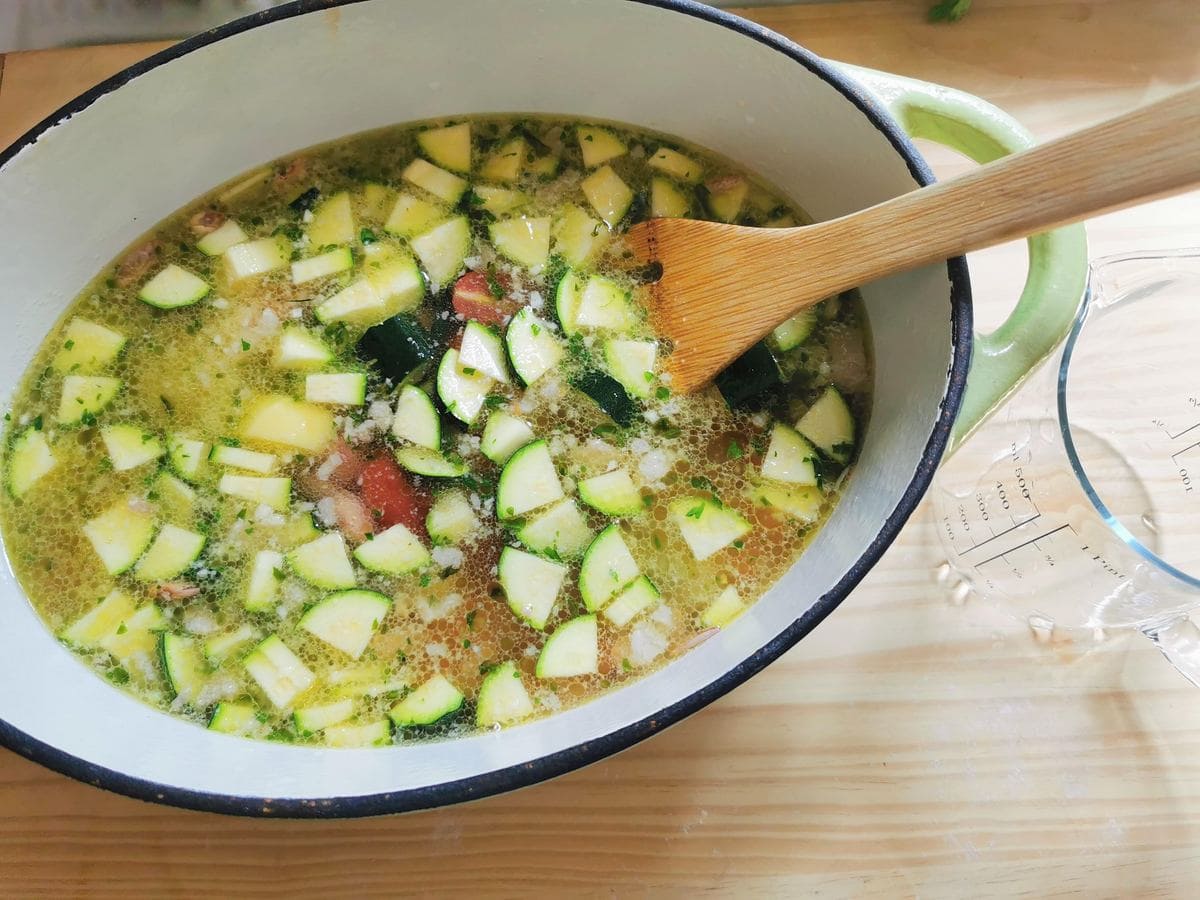

Cook dinner the minestrone Milanese.
Put the lardo or guanciale right into a meals processor, add the onion and the garlic, plus a sprig of parsley and a stick of chopped celery. Mix till you’ve gotten one thing near a paste (see picture above).
Warmth a tablespoon of olive oil in a deep soup pan or Dutch oven. Add the lardo ‘battuto’ and sauté till the pork fats begins to render (soften). Subsequent add all of the greens (besides the peas and cabbage) and the raw beans.
Cowl with loads of water (about 2 liters) and convey to the boil. Add salt to style, decrease the warmth and let the minestrone cook dinner slowly for about 2 hours.
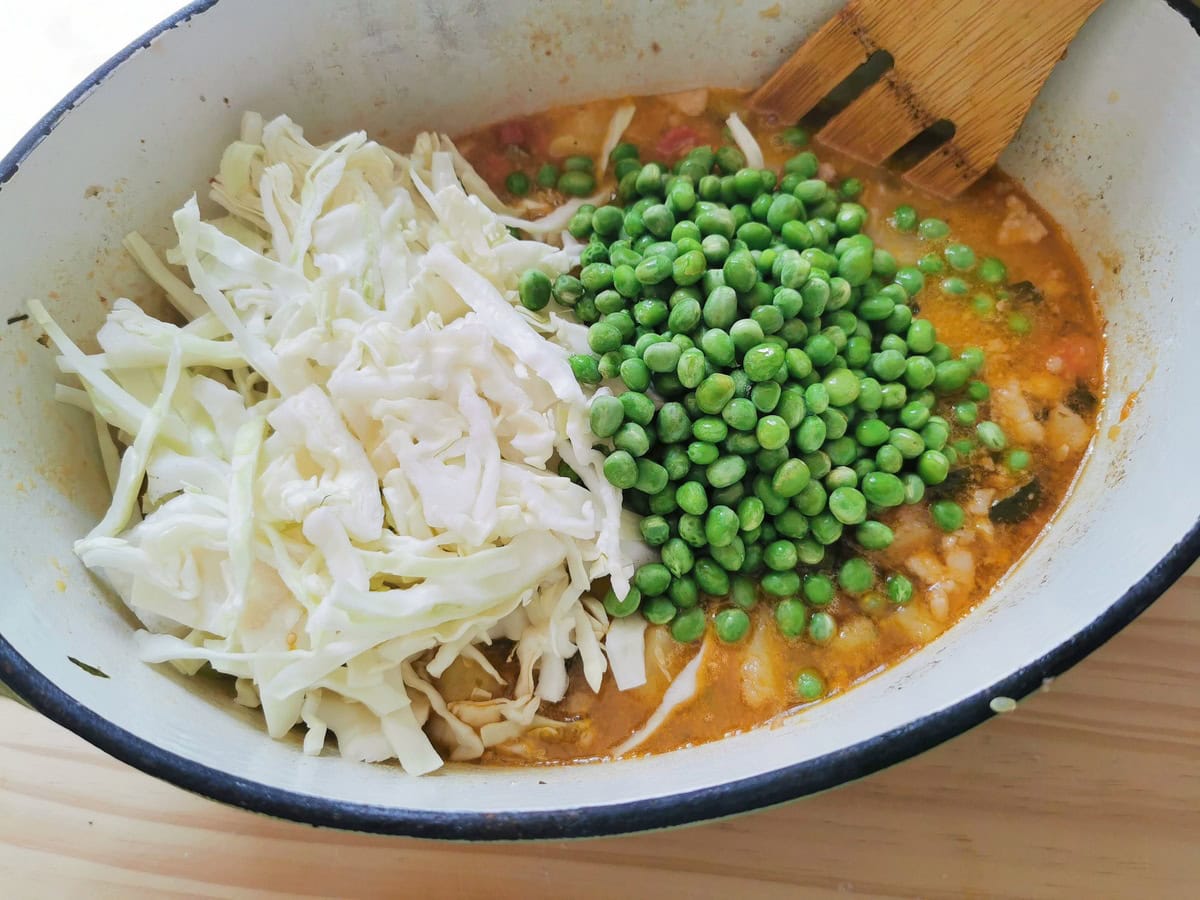

After 2 hours, add the peas and the cabbage minimize into strips, plus canned beans if utilizing. Let the cooking proceed for about 10-Quarter-hour after which add the rice or pasta.
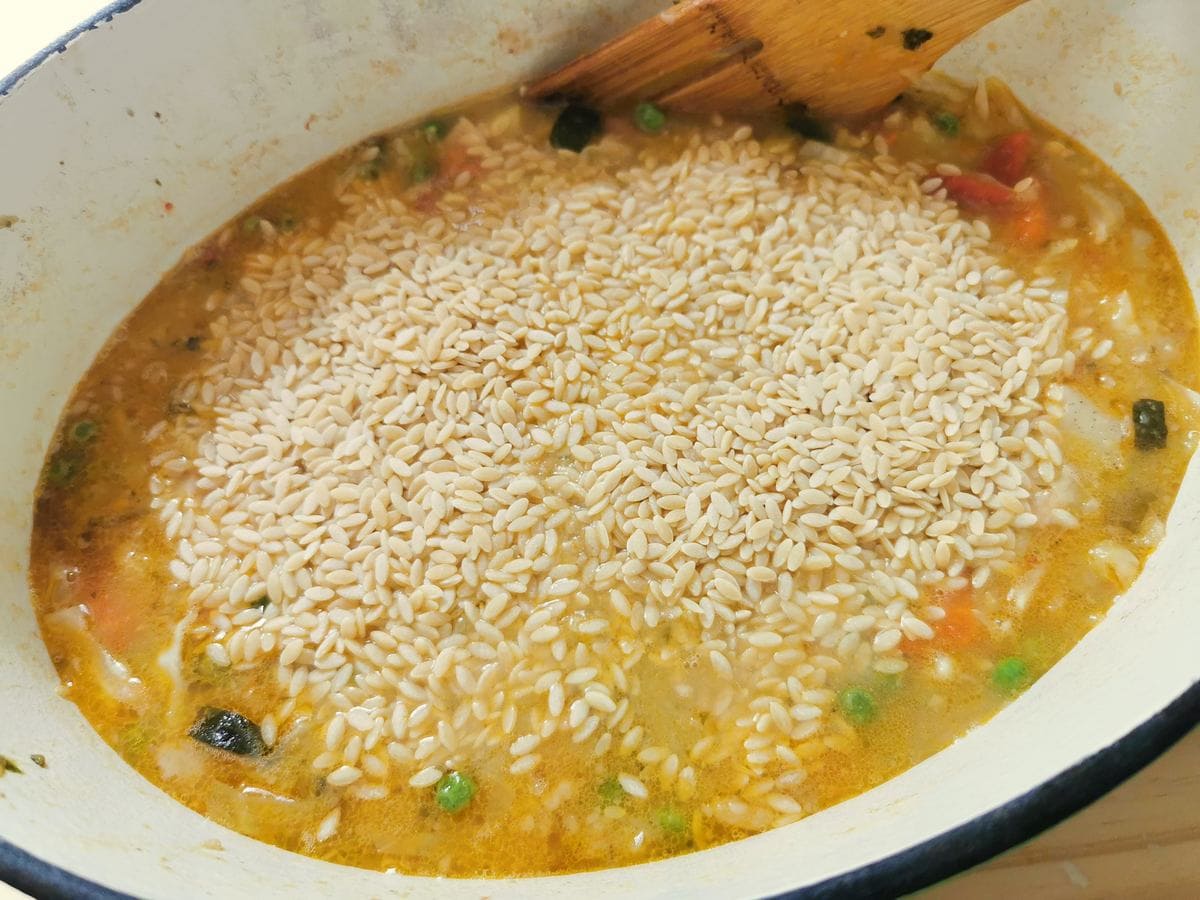

Let the rice or pasta cook dinner for the time indicated on the bundle (roughly 20 minutes for rice and 10 minutes for the pasta).
Milanese minestrone should be very dense and never too liquid. Serve the Italian method with grated Parmigiano and a splash of additional virgin olive oil.


What to do with leftovers.
You’ll be able to freeze leftover minestrone Milanese for as much as 3 months. Retailer it in , sealable freezer pleasant container. When able to reheat and luxuriate in once more, simply microwave for a few minutes to loosen the soup from the container, then add to a saucepan to completely warmth via.
You may as well preserve your leftover minestrone within the fridge for as much as 3 days and reheat it within the microwave or on the range prime.
You probably have used pasta in your minestrone Milanese, the pasta tends to soak up a lot of the liquid. When reheating add extra liquid (water or vegetable broth). I’ve additionally baked this minestrone with orzo. This can be a actually scrumptious option to serve up the leftovers!
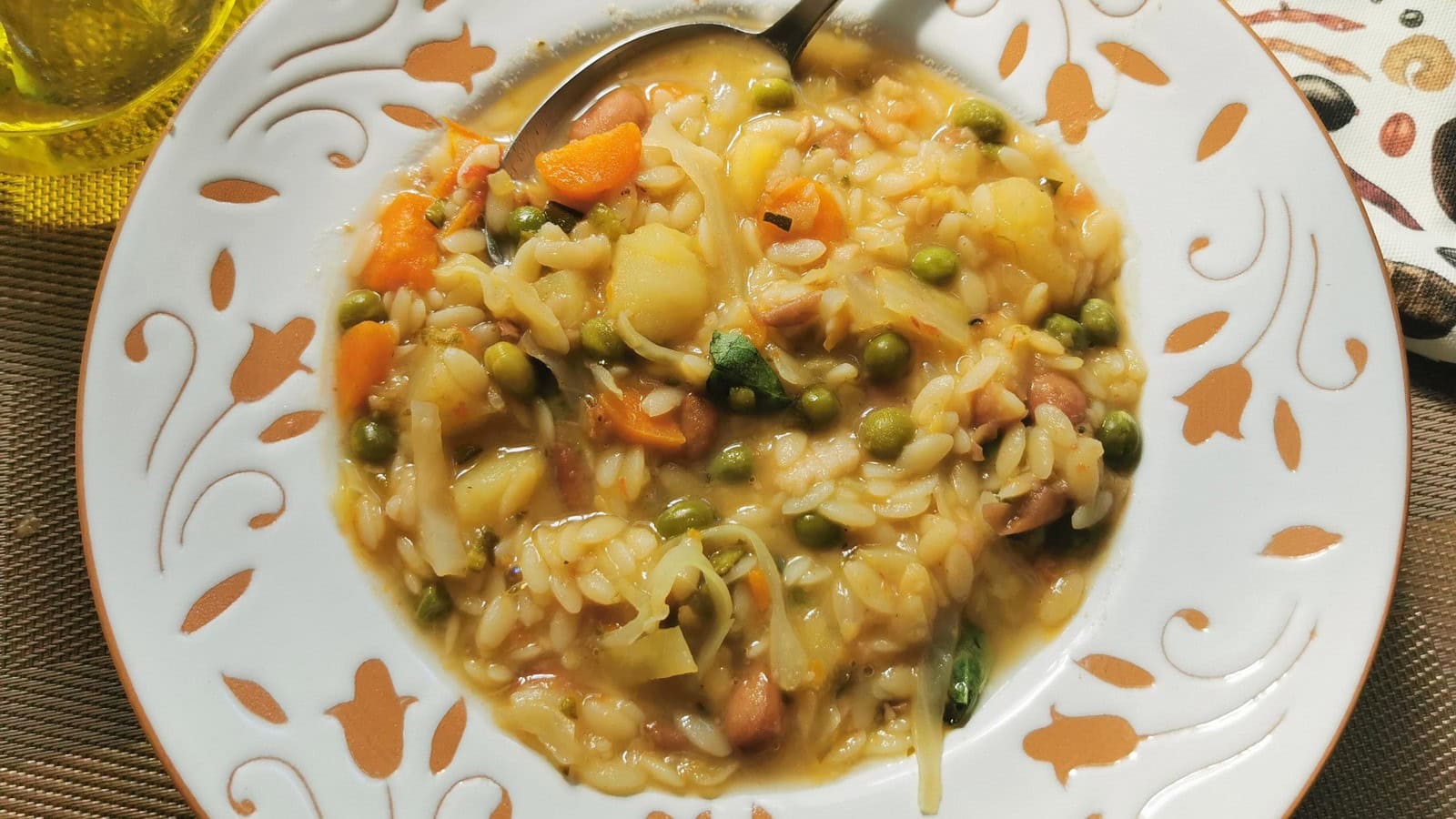

Ceaselessly Requested Questions.
In case you use rice as a substitute of pasta, this minestrone Milanese is gluten free.
To make this soup vegetarian, simply omit the pork and use a vegetarian parmesan as a substitute of Italian Parmigiano Reggiano. The latter incorporates animal rennet and isn’t appropriate for vegetarians.
Sure, minestrone Milanese could be frozen for as much as 3 months for those who preserve it in a freezer secure container.
Let me know what you assume.
Whether or not you make this recipe with rice or pasta, and serve it scorching or chilly, I am positive this traditional Italian vegetable soup will turn out to be a staple in your kitchen as a lot as it’s right here in Italy! It is so very hearty, nutritious and scrumptious!
In case you give this minestrone Milanese a attempt, do let me know the way it seems, both by commenting under or on the Pasta Challenge Fb web page. And for those who really feel it is value sharing with buddies, please do. All of your suggestions and help is far appreciated!
Buon Appetito!
Pin for Later.
If you wish to save this recipe for later, you may print it, bookmark this web page or reserve it to Pinterest. Or, make your individual on-line recipe field by clicking the ❤️ within the decrease proper nook of your display & following the short and simple directions!
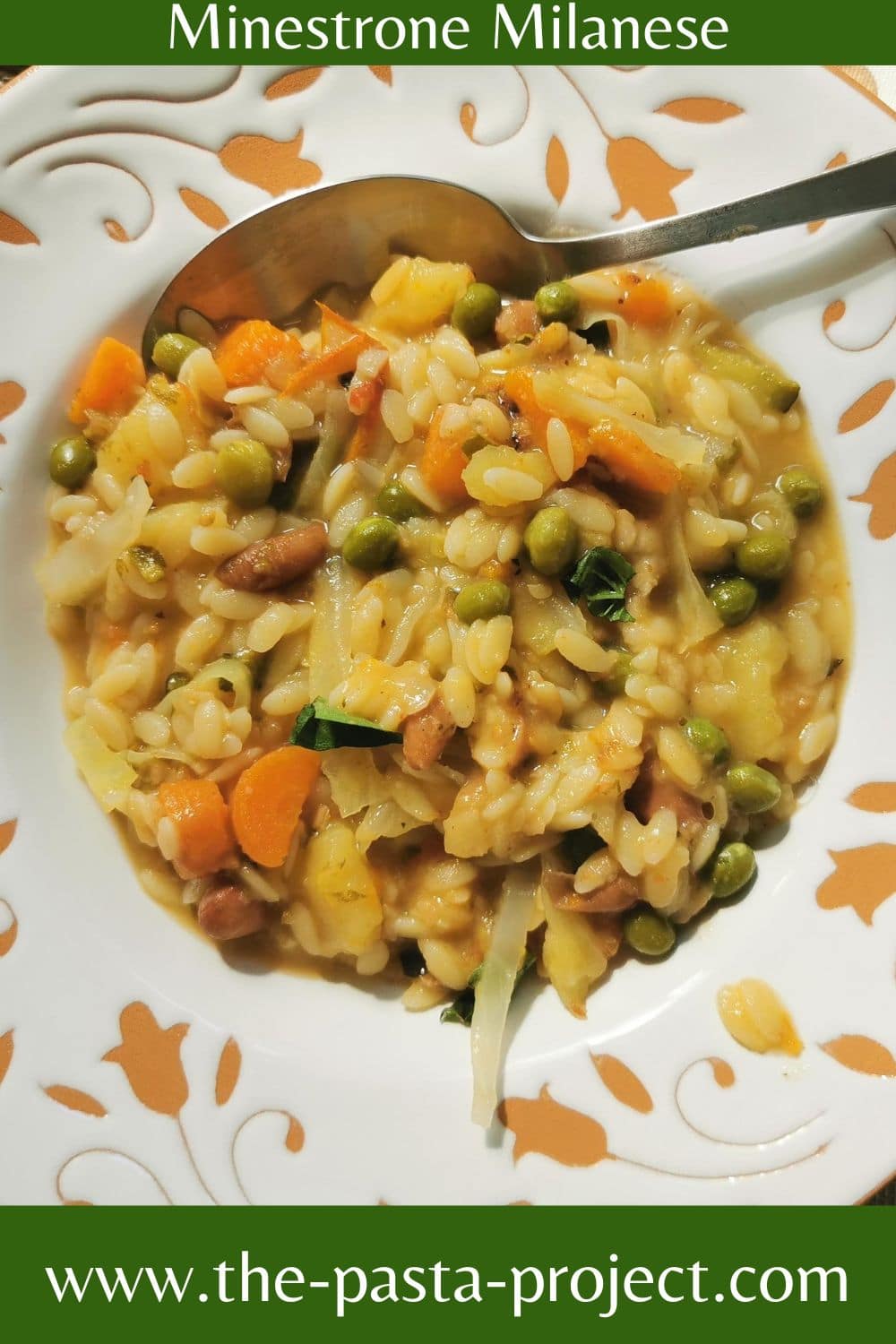

Different pasta soup recipes to take a look at.
- Tuscan minestrone with orzo
- Minestrone with pesto from Liguria
- Italian fish soup with fried angel hair pasta.
- The perfect pasta fagioli
- Lentil soup with pasta from Umbria
Reader Interactions



